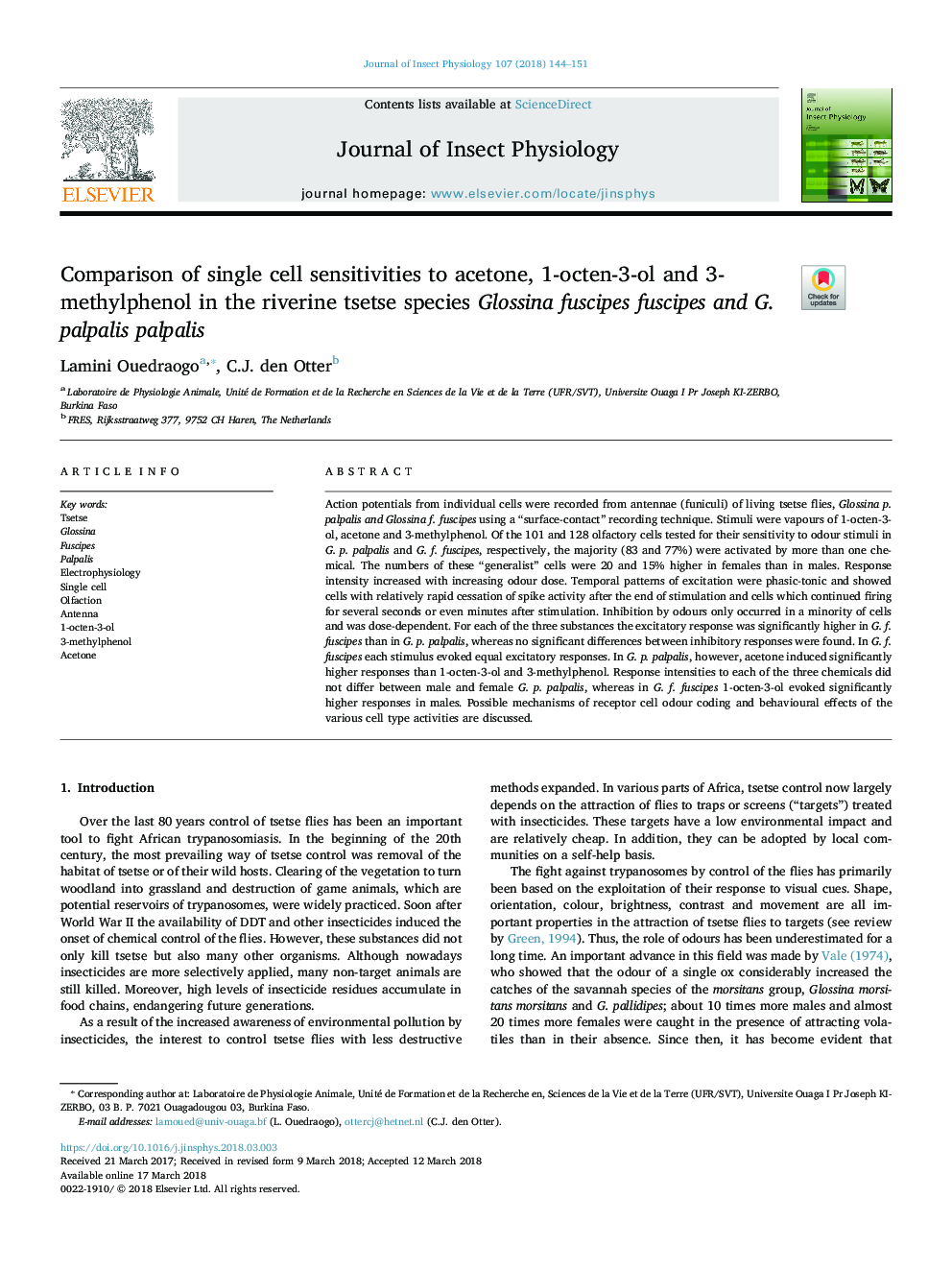| Article ID | Journal | Published Year | Pages | File Type |
|---|---|---|---|---|
| 8649759 | Journal of Insect Physiology | 2018 | 8 Pages |
Abstract
Action potentials from individual cells were recorded from antennae (funiculi) of living tsetse flies, Glossina p. palpalis and Glossina f. fuscipes using a “surface-contact” recording technique. Stimuli were vapours of 1-octen-3-ol, acetone and 3-methylphenol. Of the 101 and 128 olfactory cells tested for their sensitivity to odour stimuli in G. p. palpalis and G. f. fuscipes, respectively, the majority (83 and 77%) were activated by more than one chemical. The numbers of these “generalist” cells were 20 and 15% higher in females than in males. Response intensity increased with increasing odour dose. Temporal patterns of excitation were phasic-tonic and showed cells with relatively rapid cessation of spike activity after the end of stimulation and cells which continued firing for several seconds or even minutes after stimulation. Inhibition by odours only occurred in a minority of cells and was dose-dependent. For each of the three substances the excitatory response was significantly higher in G. f. fuscipes than in G. p. palpalis, whereas no significant differences between inhibitory responses were found. In G. f. fuscipes each stimulus evoked equal excitatory responses. In G. p. palpalis, however, acetone induced significantly higher responses than 1-octen-3-ol and 3-methylphenol. Response intensities to each of the three chemicals did not differ between male and female G. p. palpalis, whereas in G. f. fuscipes 1-octen-3-ol evoked significantly higher responses in males. Possible mechanisms of receptor cell odour coding and behavioural effects of the various cell type activities are discussed.
Related Topics
Life Sciences
Agricultural and Biological Sciences
Insect Science
Authors
Lamini Ouedraogo, C.J. den Otter,
